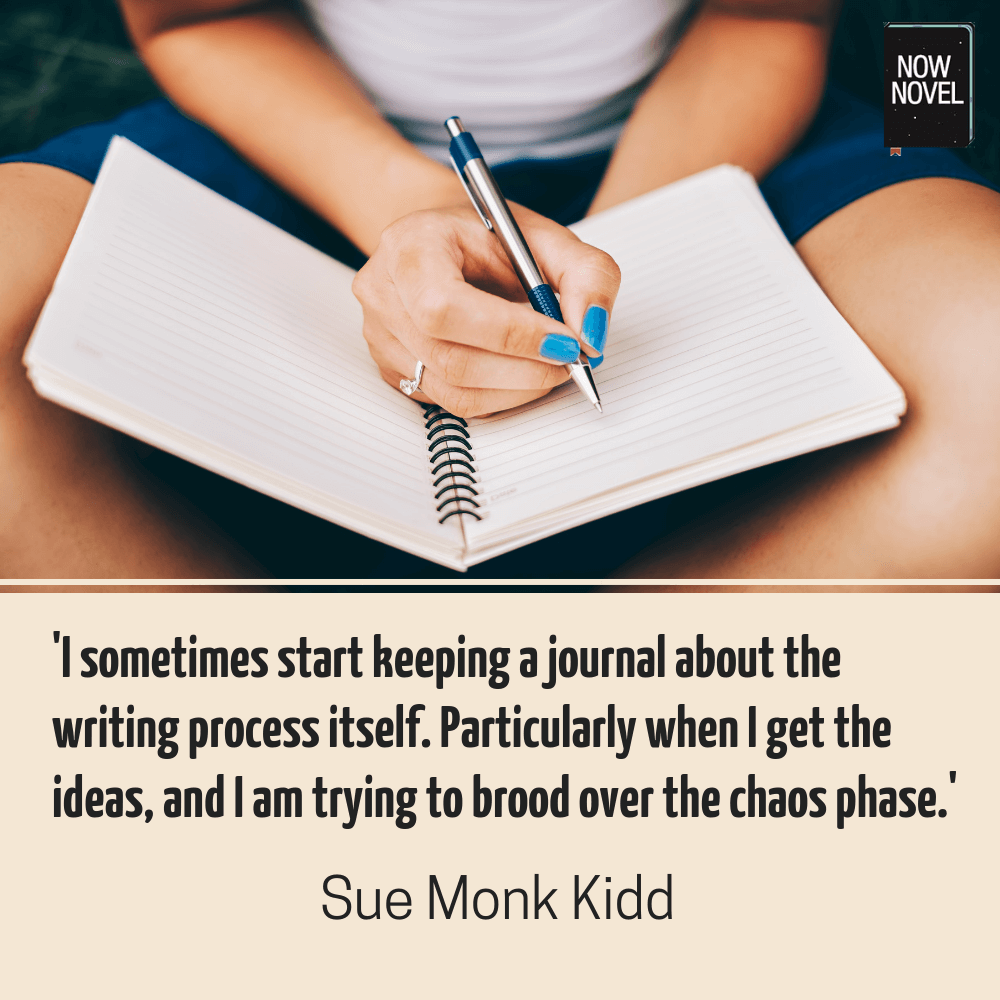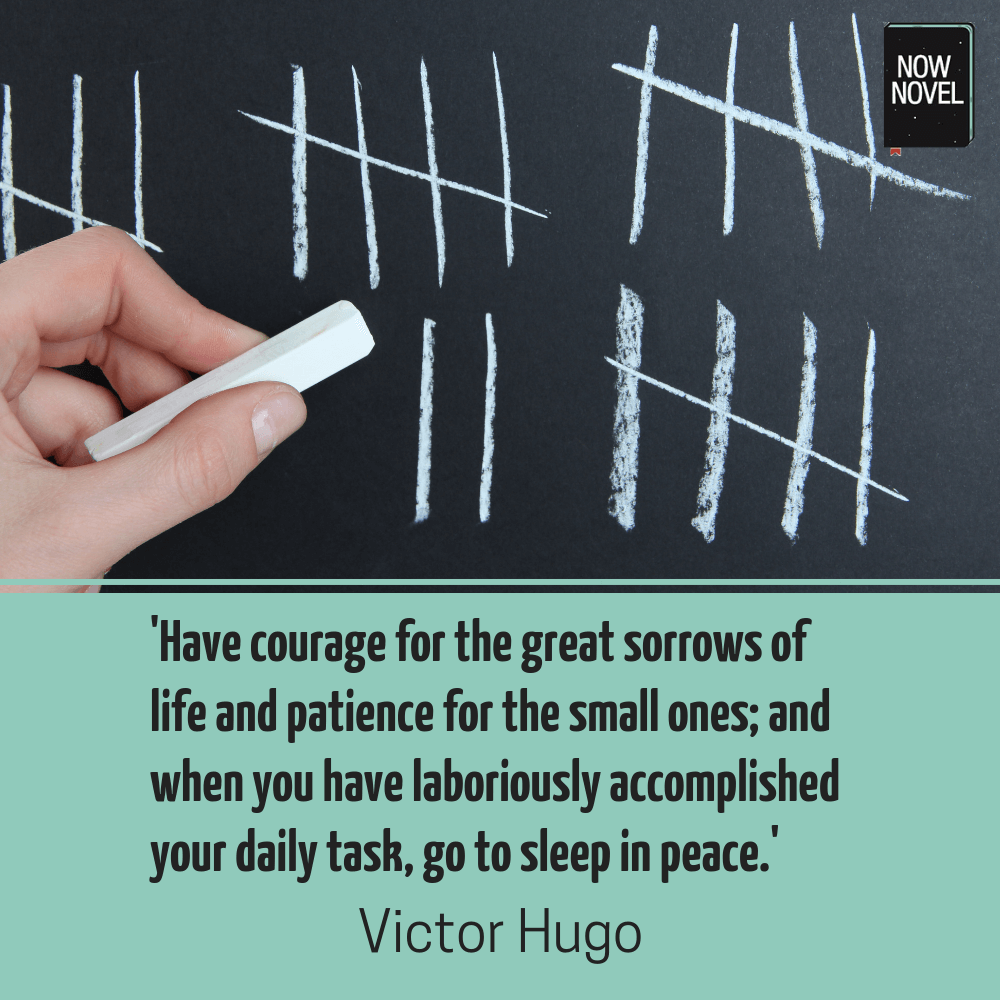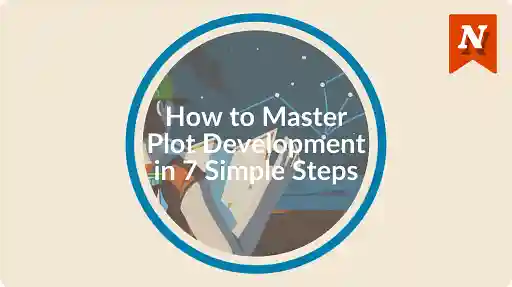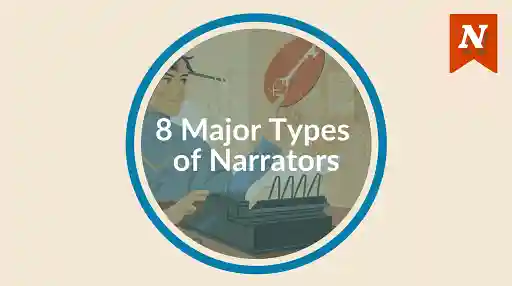Learning how to write a book fast is a matter of having a process and tools to streamline the parts of writing a book that take the most time. Whether you're preparing for a write-a-thon like NaNoWriMo or have readers breathing down your neck for your next series installment, here are ways to write a book faster:
1. Put structure and story scaffolding in place early
2. Track and organise your ideas
3. Don't stop to tinker
4. Switch to shorthand to keep writing momentum
5. Divide tasks into smaller units
Let's unpack each of these ideas:
1. Put structure and story scaffolding in place early
Many pantsers resent being told to plan or outline. There is a popular idea that some writers are simply pantsers (meaning writing 'by the seat of your pants') while others are plotters.
We should remember that story structure and scaffolding can be anything. A single sentence chapter by chapter summary, for example. Or a complex, detailed outline of plot points, character arcs, settings and conflicts.
If you've set yourself an ambitious goal of writing a book in a month, it's doubly important to have a backup plan. An outline, character profiles or simply a blueprint of settings, characters and other details helps when the first burst of momentum slows.
Story scaffolding gives you a trail of breadcrumbs through the thick of the woods, the thickets of growing sentences on the page. You're better off than Hansel and Gretel, too, since a finished rough draft lies at the end of the trail (and not a witch plotting your sticky end!)
If you don't want to create a complete outline, think about the areas you usually struggle with when writing. Is characterization tough? Setting? Getting historical details right? Focus on gathering ideas before you start drafting for the parts of writing you find most challenging.
[Complete the step-by-step prompts in the Now Novel dashboard to brainstorm ideas for your book fast.]
Randy Ingermanson, creator of the snowflake method for outlining a novel, says:
Good fiction doesn’t just happen, it is designed. You can do the design work before or after you write your novel. I’ve done it both ways and I strongly believe that doing it first is quicker and leads to a better result.

2: Track and organise your ideas
Learning how to write a book fast isn't only a matter of making good preparations. It's also important to be able to track and organise ideas as you go, so you don't have to constantly search through your document for details. Writing a book does take time. Most professional authors take months and years. Tracking and organising ideas well can eliminate a lot of time-wasting reading back over the story to avoid plot holes.
So how can you track and organise ideas?
Use index cards or a folder
Jot down character profiles on index cards so you have a physical document you can refer to when you need to remember where Character A is from, or Character B's backstory. [When you complete the character section of the Now Novel prompt process, your characters are added to your story outline which you can download and print for further quick reference.]
Use a digital snippet storing tool like Evernote or Trello
Productivity and information management tools like Evernote and Trello are useful for storing and organising information. You could create a Trello board called 'historical background' for example, if working on a historical fiction story. Here, you could save links to relevant articles or images that you plan to draw on for inspiration as you write.
The extent to which you need an organizing system for your novel depends on your genre. In historical fiction, there will be a greater need to keep track of factual details such as how characters are related, where they live and die, and significant life events. In a thriller, maybe not as much.
Create dedicated folders for elements of your story
Make a dedicated folder for your novel on your computer or laptop's desktop. Have a folder for each character, setting, or other element. You can store notes of character ideas here, pictures that inspire details such as settings or how characters dress, and more.
It might sound like a lot of work, but putting in a few hours creating an organised database of story details is part of a day and making organising a part of your process can do wonders for speed and inspiration.
3: Don't stop to tinker
Tinkering with the details of your writing as you go is always tempting. But writing a fast rough draft is all about saving the editing, the finer detail, for later. The cardinal rule of how to write a novel fast is to keep moving forward at all costs. A finished rough draft gives you a lot to work with. There's a further advantage to this approach: When you've written as freely as possible, with as little effort as possible, it's easier to cut ruthlessly and reshape your work into something polished and beautiful.
Daphne Gray-Grant of Publication Coach offers some stellar advice about learning not to edit like a perfectionist as you write. Gray-Grant advises that you:
- Don't work on the same document each day. Copy the last line of your story written to a new document and include some notes about how you want the story to continue from where you left off. That way you won't be reading back over what you've written constantly
- Write brief notes about any part of your work-in-progress you're itching to fix
- Give yourself rewards for making headway and resisting the urge to edit. At the end of a productive session, indulge in something that makes you feel good and acknowledge your achievement
You can also use a minimalist online writing tool that doesn't let you go back to edit your work. Ilys is one such writing tool, although there is a membership cost. Blind Write is a free web-based option. [Now Novel's note-writing tool where you can submit 800-word pieces for feedback from the community is also a useful, minimalist writing environment].
4: Switch to shorthand to keep writing momentum
Not entirely sure how your hero gets from the drug baron's hideout to the safe zone? Don't know the exact circumstances when would-be lovers will meet again? Don't be afraid to 'cheat' and use shorthand for the links between scenes (and moments within scenes) you haven't figured out yet.
Learning how to write a book fast means learning how to work smart, not hard. So for the first example above, you could write, for example, 'despite the chase they somehow escape [think of a nail-biting cliffhanger moment here where the two main characters are separated later].'
As you draft, make notes in square brackets wherever there is something you need to fill in later. For example:
'[The tense shootout finishes and the party makes their way to the designated evacuation area]'.
Small gaps are fine in a rough draft. Once you have the broader arc of the story in place, it will be easier to find appropriate links. There'll be more to foreshadow, too.

5: Divide tasks into smaller units
One of the big dangers of writing a book fast for a challenge like NaNoWriMo is having unattainable or unrealistic goals. If you say 'I'm going to write 10, 000 words a day', it's possible you'll achieve this target. Yet it's equally possible you'll burn out. Instead, set yourself small, manageable tasks that still bring certain reward. Writing a paragraph. A page. A scene summary. Writing in small increments has many benefits:
- It's easier to fit in writing sessions around a busy schedule
- You don't waste productive time working when you are over-tired and not thinking clearly
- The task feels more manageable, reducing the impulse to procrastinate
The size of the unit you work on each time depends wholly on you. Some writers swear by the Pomodoro technique - writing for 25 minutes followed by a five minute break. For Now Novel, we purposefully made the length of the writing extracts members can submit for feedback 800 words. This facilitates ease-of-writing and ease-of-reading. A member shared that he writes one 800-word scribble per day and the length made it easier to stick to a disciplined routine.
Get productive now and write an 800-word chunk of your story in the members' area. It's up to you whether you share it for feedback with other members or keep your progress private.









These are some great tips! I find it's also helpful to have accountability on a daily basis. Finding a friend to check in with after you complete your daily goal (or to get on your case if you haven't done it) can be a great motivator!
Alyssa H. - Over 9 years ago
Thanks so much, Alyssa. I completely agree - the usefulness of external accountability for sticking to your writing goals is one of the prime reasons why we offer 1-on-1 writer coaching at Now Novel. You learn so much working in such a close way with other writers' work too.
Bridget At Now Novel - Over 9 years ago
Great article, thanks for sharing. please visit https://notionpress.com/academy/how-to-write-a-book-series/
Notion Press - About 8 years ago
Every morning, I read this column. I really get useful tips.
Maxwell Burnham - Almost 8 years ago
Thank you, Maxwell. I'm glad you're finding the suggestions helpful.
Bridget At Now Novel - Almost 8 years ago
I'm looking for a outline I can use to help with a mostly written book, I've been reading though the chapters again and have discovers problems like a plot hole (fixed it) and bigger problems like what's the main characters story goal (her real one, what does she really want?)Anyways most articles for outlines are overwhelming or worse super vague. I'd like something that is a step by step good that is flexible. thanks for any help :D I don't like the snowflake method, I've tried it a few times now and I always hit a wall with it. Lists are nice as are questions as they help me think of other things that are missing or important to the characters, setting and plot. Stuff like that. If anyone feels like helping like sending a link to some articles you can find me on Facebook: https://www.facebook.com/Jessicaleahonwattpad Meanwhile, I'll try and figure this out on my own, have gone all the way back to the first chapters and am really giving them a hard look. Again thank so much if anyone reads this and decides to help.
Robintvale - Over 6 years ago
Hi Robintvale, you can try the story outlining tools in the member area of the site. It is step by step, and uses a prompt-based system. If you have any questions, drop us an email at help at nownovel dot com.
Jordan At Now Novel - Over 6 years ago
Finally a useful article about this problem with actual non vague solutions. Thanks!
J - About 4 years ago
Thank you for your kind feedback, J, and for reading our blog! It's a pleasure.
Jordan - About 4 years ago
Bookmarked! And hey, if other authors don't want to consider trying another way that would ease their frustrations, then too bad for them! I'll mention that an outline can be way simpler then they're making it out to be in their heads, gibe a short example and leave it at that. There's only so much you can do for others, they have to make up their own minds
J - About 2 years ago
Hi J, thanks for bookmarking this article, I'm glad you found it helpful. Yes, outlining may seem like more work but it is very helpful for having a guide and sense of scope for the drafting process. I understand too, though, that it stifles creative freedom too much for some, so a 'draft zero' is another way to do some loose discovery work. Thank you for reading our blog and sharing your feedback.
Jordan - About 2 years ago